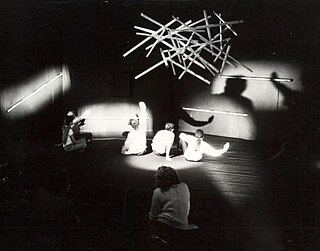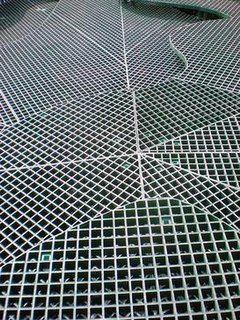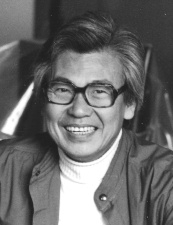 W
WInteractive art is a form of art that involves the spectator in a way that allows the art to achieve its purpose. Some interactive art installations achieve this by letting the observer or visitor "walk" in, on, and around them; some others ask the artist or the spectators to become part of the artwork.
 W
WInteractive media normally refers to products and services on digital computer-based systems which respond to the user's actions by presenting content such as text, moving image, animation, video and audio.
 W
WAgrippa is a work of art created by science fiction novelist William Gibson, artist Dennis Ashbaugh and publisher Kevin Begos Jr. in 1992. The work consists of a 300-line semi-autobiographical electronic poem by Gibson, embedded in an artist's book by Ashbaugh. Gibson's text focused on the ethereal, human-owed nature of memories retained over the passage of time. Its principal notoriety arose from the fact that the poem, stored on a 3.5" floppy disk, was programmed to encrypt itself after a single use; similarly, the pages of the artist's book were treated with photosensitive chemicals, effecting the gradual fading of the words and images from the book's first exposure to light.
 W
WBarometer is a 2013 sculpture by Devin Laurence Field, to be installed at the newly constructed Hillsboro Ballpark in Oregon, United States. The stainless steel sculpture, commissioned by the City of Hillsboro, stands fifteen feet tall at the stadium's entry plaza. Installation of the work began on June 10, 2013.
 W
WThe Baschet Brothers were two French artists named François Baschet and Bernard Baschet who collaborated on creating sound sculptures and inventing musical instruments, such as the Cristal Baschet. François Baschet was a sculptor and Bernard Baschet an engineer. The Baschet Brothers invented the inflatable guitar, the aluminum piano and many other experimental musical instruments. They created an "Baschet Educational Instrumentarium" for exposing young people to musical concepts.
 W
WCrown Fountain is an interactive work of public art and video sculpture featured in Chicago's Millennium Park, which is located in the Loop community area. Designed by Spanish artist Jaume Plensa and executed by Krueck and Sexton Architects, it opened in July 2004. The fountain is composed of a black granite reflecting pool placed between a pair of glass brick towers. The towers are 50 feet (15.2 m) tall, and they use light-emitting diodes (LEDs) to display digital videos on their inward faces. Construction and design of the Crown Fountain cost $17 million. The water operates from May to October, intermittently cascading down the two towers and spouting through a nozzle on each tower's front face.
 W
WDawnsong is a public artwork by American artist Brose Partington, located at Indianapolis Art Center in Indianapolis, Indiana, United States. Dawnsong was installed as part of the Center's ARTSPARK initiative.
 W
WHeather Dewey-Hagborg is an information artist and bio-hacker. She is best known for her project Stranger Visions, a series of portraits created from DNA she recovered from discarded items, such as hair, cigarettes and chewing gum while living in Brooklyn, New York. From the extracted DNA, she determined gender, ethnicity and other factors and then used face-generating software and a 3D printer to create a speculative, algorithmically determined 3D portrait. While critical of technology and surveillance, her work has also been noted as provocative in its lack of legal precedent.
 W
WGlitch art is the practice of using digital or analog errors for aesthetic purposes by either corrupting digital data or physically manipulating electronic devices. Glitches appear in visual art such as the film A Colour Box (1935) by Len Lye, the video sculpture TV Magnet (1965) by Nam June Paik and more contemporary work such as Panasonic TH-42PWD8UK Plasma Screen Burn (2007) by Cory Arcangel.
 W
WHeart Beacon is an outdoor 2013 sculpture by American artists Blessing Hancock and Joe O'Connell, installed at the Bureau of Emergency Management's Emergency Coordination Center in Portland, Oregon, United States.
 W
WIn Search of the Truth is an international, interactive public art project of a touring, inflatable recording booth called 'The Truth Booth'. The Booth is a 16-foot-tall by 23-foot-wide speech bubble that permits visitors to record videos of themselves completing the sentence, "The truth is...". It was established in 2011 as a collaboration between Ryan Alexiev, Hank Willis Thomas and Jim Ricks.
 W
WInstallation art is an artistic genre of three-dimensional works that are often site-specific and designed to transform the perception of a space. Generally, the term is applied to interior spaces, whereas exterior interventions are often called public art, land art or art intervention; however, the boundaries between these terms overlap.
 W
WInstallation art is an artistic genre of three-dimensional works that are often site-specific and designed to transform the perception of a space. Generally, the term is applied to interior spaces, whereas exterior interventions are often called public art, land art or art intervention; however, the boundaries between these terms overlap.
 W
WKacie Kinzer is an American designer and interactive artist. Her best known works are a series of cardboard "tweenbots", which were designed to get help from people, in order to complete their mission: crossing Washington Square Park. The bots were collected by the Museum of Modern Art and part of an exhibit on Design and Communication during 2011. Kinzer spoke at PopTech in 2009.
 W
WKortunefookie is an interactive public art project, a large scale 4-foot (1 m) high fortune cookie made of red cedar, which grants users a printed fortune with a simple touch of a button; Kortunefookie’s social network creates the fortunes via the project's Web site. Inspired by the idea of the fortune cookie, the project was created to permit different users to share their thoughts and create a new kind of social ties. It is an interactive kiosk that issues short texts written by anonymous users on the Kortunefookie website that resemble the messages found in the fortune cookies, but each fortune from the Kortunefookie is different, unlike mass-produced fortunes in regular fortune cookies. Kortunefookie's Web site suggest users to send an innermost secret, a smarmiest wisecrack, a private prayer, or an outlandish prediction.
 W
WLynn Hershman Leeson is an American artist and filmmaker. Her work combines art with social commentary, particularly on the relationship between people and technology. Leeson's work in media-based technology helped legitimize digital art forms.
 W
WMichael Naimark is an artist, inventor, and scholar in the fields of virtual reality and new media art. He is best known for his work in projection mapping, virtual travel, live global video, and cultural preservation, and often refers to this body of work as “place representation”.
 W
WOmega Mart is an interactive art installation created by American arts company Meow Wolf and located in the Area15 complex in Las Vegas. Those entering the installation explore a supermarket, from which they can access various other areas and uncover a narrative. It features contributions from over 300 artists.
 W
WOscilloScoop is an interactive music app for iOS that runs on the iPad, iPhone, and iPod Touch, available through the iTunes App Store. The app presents a real-time interface for creating electronic music in various electronic music genres from hip hop to techno and house. The app is designed with a minimalist modern interface of three colored crowns, that spin like potters' wheels. Touching each crown affects the parameters of the audio. The top crown controls pitch, the middle a low pass resonant filter, and the bottom a fader. Controls on the left allow one to change the bassline beat, while buttons on the right allow the user to save their creation, and a slider below controls tempo.
 W
WPanoramical is a 2015 video game by Fernando Ramallo and David Kanaga. The player explores and manipulates 15 abstract landscapes using gamepad, mouse, joystick, or MIDI controls. The game's guest composers include Baiyon and Doseone. A Pro license of the game is marketed for professional DJs to play in public. Panoramical's development was supported by Finji, Indie Fund, and Polytron.
 W
WPod is the name of a 2002 modern sculpture by American artist Pete Beeman, currently installed at Southwest 10th Avenue and West Burnside Street in downtown Portland, Oregon. The 30-foot (9.1 m) sculpture, intended to represent the "infrastructure, energy, and vibrancy of Portland," is supported by its static tripod base with a 15-foot (4.6 m) diameter. It is constructed from stainless steel, galvanized steel, bronze, titanium, lead and other materials. Pod was fabricated by Beeman and David Bermudez, and engineered by Beeman and Peterson Structural Engineers. It is considered interactive and kinetic, with a central, vertical pendulum that swings back and forth when pushed. The sculpture cost as much as $50,000 and was funded by the Portland Streetcar Project. Pod is part of the City of Portland and Multnomah County Public Art Collection courtesy of the Regional Arts & Culture Council.
 W
WRain Room is a 2012 experiential artwork by Hannes Koch and Florian Ortkrass of Random International, which found its first permanent installation in Sharjah, United Arab Emirates in 2018. The piece had previously shown in a number of international art venues, including New York's Museum of Modern Art (MoMA) and London's Barbican.
 W
WScott Snibbe is an interactive media artist, entrepreneur, and meditation instructor who is currently the host of A Skeptic's Path to Enlightenment meditation podcast. He has collaborated with other artists and musicians, including Björk on her interactive “app album” Björk: Biophilia that was acquired by New York's MoMA as the first downloadable app in the museum's collection. Between 2000 and 2013 he founded several companies, including Eyegroove, which was acquired by Facebook in 2016. Early in his career, Snibbe was one of the developers of After Effects.
 W
WStratum Pier is an interactive overlook by American artist Kendall Buster. The functional sculpture is located at the Indianapolis Museum of Art's 100 Acres: Virginia B. Fairbanks Art & Nature Park.
 W
WWen-Ying Tsai was a Chinese-American pioneer cybernetic sculptor and kinetic artist best known for creating sculptures using electric motors, stainless steel rods, stroboscopic light, and audio feedback control. As one of the first Chinese-born artists to achieve international recognition in the 1960s, Tsai was an inspiration to generations of Chinese artists around the world.
 W
WWeather Machine is a lumino kinetic bronze sculpture and columnar machine that serves as a weather beacon, displaying a weather prediction each day at noon. Designed and constructed by Omen Design Group Inc., the approximately 30-foot-tall (9 m) sculpture was installed in 1988 in a corner of Pioneer Courthouse Square in Portland, Oregon, United States. Two thousand people attended its dedication, which was broadcast live nationally from the square by Today weatherman Willard Scott. The machine cost $60,000.